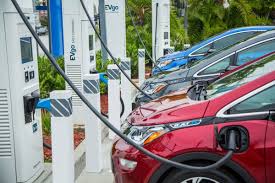You have just purchased yourself a shiny new Tesla in the hopes of never again having to spend over $2 per litre of fuel. Now what? What deductions are you entitled to for this electric vehicle?
If you are an employee or a sole trader, you can either make your claim using the cents per kilometre method or the logbook method.
Cents per Kilometre Method
The cents per kilometre method is the easiest to calculate. You just claim the work distance travelled (in km) for the year up to a maximum of 5000km and multiply it by the ATO set rate for the relevant year. For example, in the 2023 financial year the ATO have given a set rate of 78 cents per km meaning you can claim a maximum deduction of $3,900 for the operating expenses of your electric vehicle for the year. When it comes to keeping records, written receipts are not required however you should still have reasonable evidence to prove how you have calculated distance claimed.
Logbook Method
The logbook method allows you to claim a deduction for your actual vehicle costs. Under this method you are required to keep a record of all vehicle expenses incurred, the total is then apportioned by your logbook percentage to calculate your deduction.
To claim under this method, you first need to keep a valid logbook.
Step one is to record your opening odometer right before starting your logbook.
Step two is to record all your work-related travel. This must include, travel date, details of travel, starting odometer, closing odometer and a total KMs travelled. You will need to do this for 12 continuous weeks.
Step three: Work out your logbook percentage. To calculate the percentage, you will need to take a final reading of your odometer at the end of the 12-week period. We should now have 3 values. The odometer at the start and end of the 12-week period and the total work-related distance travelled. From this we can calculate the work-related percentage by dividing the work-related distance by the total distance travelled during the 12-week period.
Now you have a logbook you can claim the work related percentage of vehicle costs such as;
- Fuel Costs (see below for Electric Vehicle rules)
- Annual Servicing Fees
- Any extra repairs and maintenance
- Registration
- Insurance
- Interest on the vehicle’s loan
- Depreciation (see below)
The biggest difference between traditional vehicles and electrical vehicles is that EV’s don’t require traditional fuels so how do you work out the charging costs
Electric Vehicle Recharge Costs
When it comes to claiming the costs to recharge. If you recharge your EV from a commercial charging station, then you just keep the receipts and apply the logbook % to the total for the year identical to if you were to have fuel receipts.
However, if you charge from home, you will find that it is very difficult to calculate portion of your electricity bill is from charging your EV at home since the costs are lumped in with your household electricity costs. Because of this the ATO have provided a shortcut method to easily calculate the running costs of the vehicle. Like the cents per kilometre method the ATO provides a rate of 4.2 cents per kilometre travelled. To calculate this, you would grab your odometer reading at the start of the financial and year and another at the end of the financial year. Calculate the distance travelled and multiply by 4.2 cents. The final thing is to apply the logbook percentage to get your final figure.
When opting to use this ATO shortcut method you need to be certain that your vehicle is eligible. The shortcut method can be used for zero emission vehicles, this means that hybrid vehicles with an internal combustion engine that uses liquid fuel are not eligible for the method.
Car Cost Limit and Depreciation
If you are claiming your motor vehicle expenses using the logbook method, you can claim the work-related portion of the vehicle up to the car cost limit for that year. From July 2022 to June 2023 the limit is $64,741. For example, the vehicle you purchased was $75,000. When calculating the decline in value for the vehicle you would first have to reduce the cost of the vehicle to $64,741.
Related blogs:
Tax consequences of buying a work vehicle
Author: Matthew Prawirohardjo
Email: matthewp@faj.com.au

